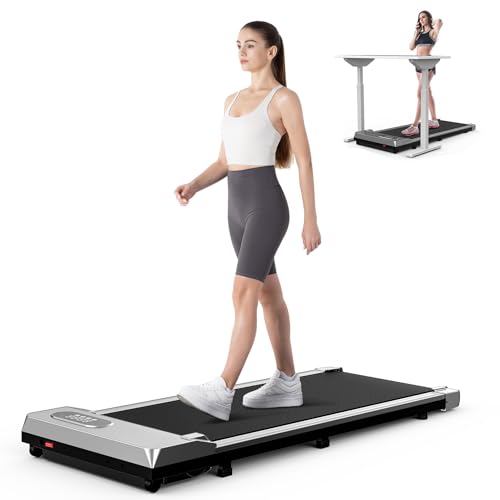Are You In Search Of Inspiration? Check Out Treadmill
The Comprehensive Guide to Home Treadmills: Everything You Need to Know
With an increasing concentrate on fitness and wellness in today's hectic world, home treadmills have emerged as a popular choice for those wanting to infuse regular workout into their routines. Whether for aesthetic enhancement, convenience, or physical fitness tracking, treadmills use a flexible option for numerous physical fitness lovers.
This short article explores various aspects of home treadmills, providing insights into their features, benefits, and important factors to consider for possible buyers. It also deals with typical concerns and mistaken beliefs about these exercise machines.
Table of Contents
- What is a Home Treadmill?
- Advantages of Having a Home Treadmill
- Kinds Of Home Treadmills
- Key Features to Consider
- Maintenance Tips for Your Treadmill
- Frequently Asked Questions about Home Treadmills
- Conclusion
What is a Home Treadmill?
A home treadmill is a fitness device created for running or walking while remaining in one place. Unlike traditional running outside, it allows people to work out in the comfort of their homes. Treadmills can be powered by electricity or can be manual, requiring the user to move the belt with their own effort.
Advantages of Having a Home Treadmill
The benefits of owning a home treadmill are various. Below are some essential benefits:
- Convenience: Users can work out at any time, avoiding weather condition constraints or gym schedules.
- Time Management: Reduced travel time to and from a gym, permitting quicker exercises.
- Privacy: The convenience of working out in an individual environment, perfect for those who feel uncomfortable in public settings.
- Versatility: Adjustable speeds and inclines deal varied exercise choices, accommodating different physical fitness levels.
- Combination with Technology: Many modern-day treadmills come equipped with fitness apps and tracking systems that keep an eye on development.
Types of Home Treadmills
Home treadmills can be categorized into numerous types, each serving different needs and preferences:
Type
Description
Motorized Treadmills
Electric motors that allow users to adjust speed and slope with push-button controls.
Handbook Treadmills
Needs physical effort to move the belt, usually more compact and portable.
Folding Treadmills
Space-saving styles that can be folded when not in usage.
Treadmill Desks
Allow users to walk while working, incorporating fitness into their everyday jobs.
Choosing the Right Treadmill
Consider these factors when picking the suitable type of treadmill for individual use:
- Space Requirements: Ensure the treadmill fits easily in your designated workout area.
- Seek advice from Reviews: Look at user feedback and professional reviews to understand performance and reliability.
- Budget plan: Set a clear budget plan, as costs can vary widely.
- Usage Frequency: Assess how often the treadmill will be used to identify resilience and functions needed.
Secret Features to Consider
When searching for a home treadmill, it's important to evaluate specific functions that improve the exercise experience. Certain features to prioritize consist of:
- Motor Power: Look for a motor with at least 2.0 CHP for reputable performance.
- Running Surface: A bigger running surface area is more effective, especially for those who wish to run or take longer strides.
- Slope Options: Adjustable inclines increase exercise strength and help engage various muscle groups.
- Cushioning System: Good shock absorption can significantly decrease the influence on joints and avoid injuries.
- Technology Integration: Built-in heart rate monitors, Bluetooth connection, and integrated workout programs can enhance your fitness journey.
Maintenance Tips for Your Treadmill
A well-maintained treadmill can last for many years. check out your url is important to guaranteeing ideal performance. Consider these maintenance tips:
- Keep It Clean: Wipe down the surface frequently to get rid of dust and sweat.
- Lube the Belt: Apply silicone lube according to manufacturer guidelines to lessen friction.
- Check for Wear and Tear: Regularly examine the belt and deck for indications of damage or extreme wear.
- Examine the Motor: Clean dust from the motor area and ensure appropriate ventilation to prevent getting too hot.
- Follow User Manual: Always refer to the user manual for particular upkeep directions associated with the model.
FAQs about Home Treadmills
1. Are home treadmills effective for weight reduction?
Yes, home treadmills can be very effective for weight loss if utilized regularly as part of a well balanced diet and fitness regimen.
2. How much area do I need for a treadmill?
While it varies by design, a typical home treadmill will require a minimum of 6.5 feet in length and 3 feet in width.
3. Do I need special shoes to utilize a treadmill?
While special shoes aren't essential, buying good quality running shoes can help prevent injuries and improve comfort.
4. Can I watch TV or listen to music while using a treadmill?
Definitely! The majority of modern-day treadmills have features that permit users to enjoy TV or listen to music through integrated speakers or through Bluetooth connections.
5. For how long should I use a treadmill every day?
For optimal health advantages, aim for at least thirty minutes of moderate-intensity workout on the treadmill most days of the week.
Owning a home treadmill opens the door to practical and versatile workouts suitable for people of all skill levels. Comprehending the different types, vital features, and correct maintenance can help ensure that your investment stays effective and enjoyable. As physical fitness becomes a top priority for many, home treadmills provide an outstanding chance for individual health and wellness, making it much easier than ever to include exercise into life.
With the right resources and assistance, a home treadmill can become an essential part of one's physical fitness journey, assisting individuals achieve their objectives in a sustainable manner.
